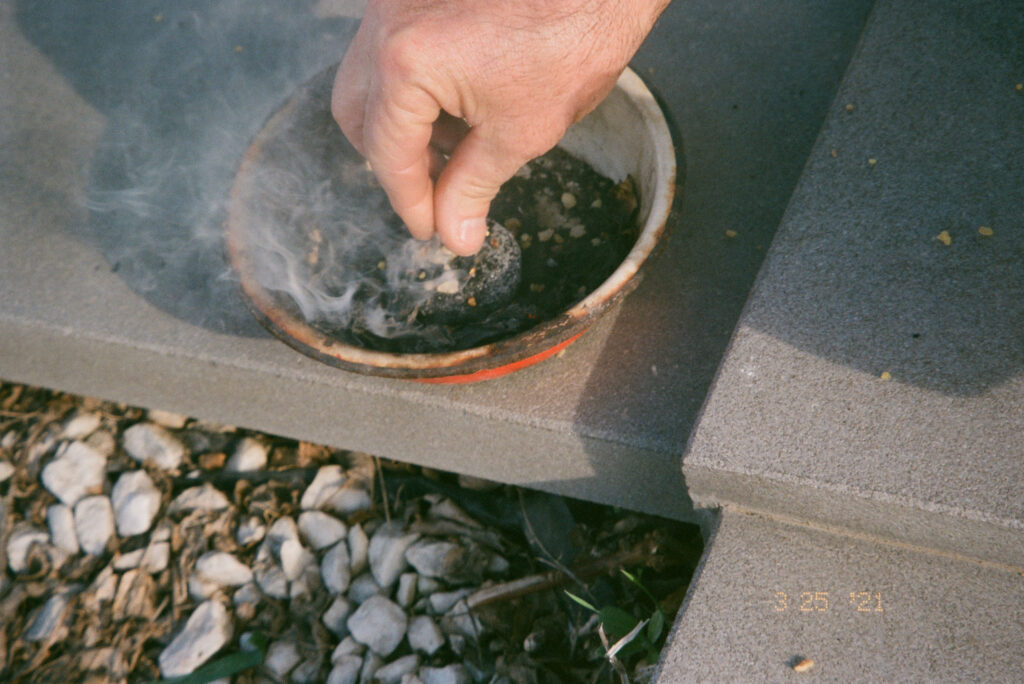
How Armenians Honor Their Ancestors Through Ritual and Storytelling
Wilted red carnations lie on the gravel by his tombstone, an ornate Armenian khachkar standing upright for almost three decades now. The flowers will get thrown out, of course, replaced by freshly cut ones.

When a family member passes in Armenia, we say “Astvads Hogin lusavori”, or “Let God shine a light on their Soul”. These images point to how loved ones continue to actively be remembered and live on through a combination of stories told about them and the practice of rituals such as visiting the cemetery and lighting the incense called khoonk.
published


Even at a young age, I was never shielded from the concept of death. At the age of four, I visited my grandfather’s tombstone, my first meeting with him, albeit without the exchange of words and embraces. While I never experienced his physical presence, I was told many stories about how his parents abandoned him as a child and how his sense of humor could send a room of strangers into a roar of laughter. These stories gained a sensory dimension when I was shown his favorite worn tobacco pipe and the watercolor paintings he created on the inside of empty chocolate boxes in his last few years.


My second grandfather passed away when I was in High School. His desk, where he computed all of his formulas as a physics professor, gets dusted weekly by my grandmother, who often sorts through his notes and smiles proudly, despite her degree from the Yerevan State Conservatory of Music. I visited Prague last year on a trip by myself, a city that felt heavy to me perhaps because I knew my grandfather’s younger brother had drowned there in an attempt to save members from his tour group whose boat had toppled over into the murky Vltava River. Although I had never met Henrik, my Mother asked me to honor him through releasing a flower into the water. Passing strangers watched as I peeked over one of the city’s many bridges and watched the bright orange petaled stem drift away on the rippled surface. My Mother had cried watching the video recording I sent her, she later shared with me.
On the way to the cemetery a month ago, our taxi driver, whose Mother had recently passed on, claimed that “one never really dies if you mention their name”. These photographs depict how Armenians construct an earthly afterlife for their loved ones, holding onto their legacy and honoring them through frequent visits to the cemetery and always remembering their presence in any room.
The rituals and the stories we tell about our family and loved ones connect Armenians who have suffered from tragic losses and have been stripped of the privilege of personally knowing their ancestors. Whether it was from the families broken apart from the Genocide or the orphaned children after the Spitak earthquake in 1988, Armenians have relied on oral traditions to feel connected to those who no longer take up a physical space in their lives. These stories serve as the glue that connect us from past to present and why we feel stronger moving forward, knowing that all of our loved ones and standing firmly behind us, encouraging us to write the stories that will one day be told about us.